Rice control application
CQMa421 Applied on Rice
Rice prevention and control experiments and demonstrations have been widely carried out in Chongqing, Guangxi, Hubei, Hunan, Guizhou, Hainan and other places;
In 2017, the National Agricultural Technology Promotion Center undertook the application test in 28 places in 14 major rice-producing provinces and regions, and the control effect of 421 products on rice planthopper reached 70% - 80%,
The control effect on Chilo suppressalis and rice leaf roller reached 60% - 80%, and the yield increase effect was obv
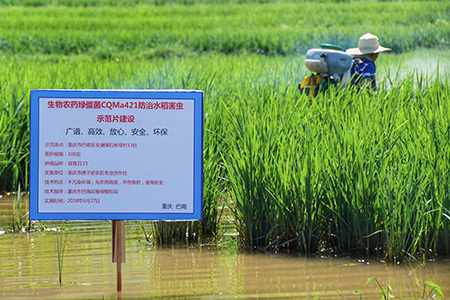
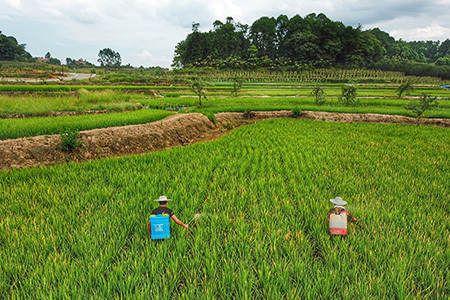
Chongqing · Banan
Implementation time: June 2018
Demonstration site: Shibanya Village, Anlan Town, Banan District, Chongqing
Test area: 100 mu
Control objects: rice planthopper, rice leaf roller
Reagent scheme: Metarhizium anisopliae CQMa421
Demonstration objective: Due to the large population, it is mainly aimed at the centralized green control of rice planthopper and rice leaf roller.
Test results: before application, about 15000 to 20000 heads; After application, it will be reduced to 100-150 heads.
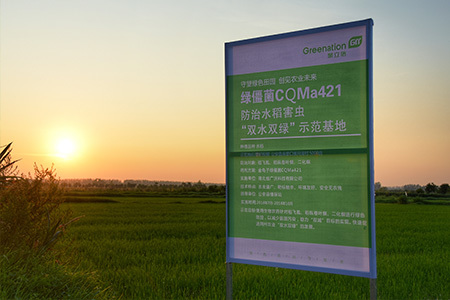
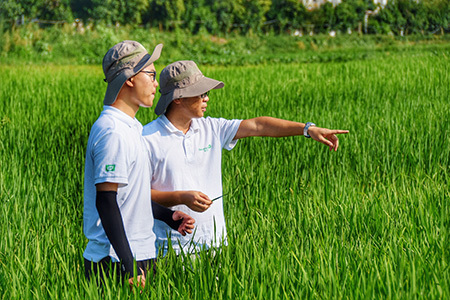
Hubei Public Security
Implementation time: January to October 2018
Demonstration site: Yuehu Village, Mahaokou Town, Gong'an County, Hubei Province
Test area: 5000 mu
Control objects: rice planthopper, rice leaf roller, Chilo suppressalis
Reagent scheme: Metarhizium anisopliae CQMa421&Jinggang · Bacillus cereus&avermectin
Demonstration objectives: use biological pesticides to carry out green prevention and control of rice planthopper, rice leaf roller and rice stem borer, and point to diseases such as rice blast and sheath blight to reduce non-point source pollution and help achieve the "double reduction" goal. Quickly promote the development of "double water and green" agriculture in Jingzhou.
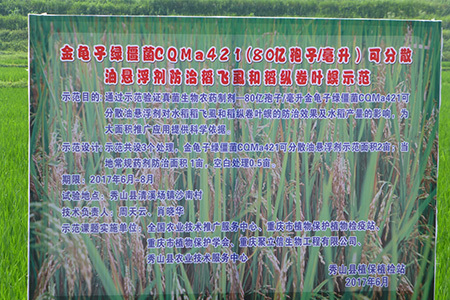
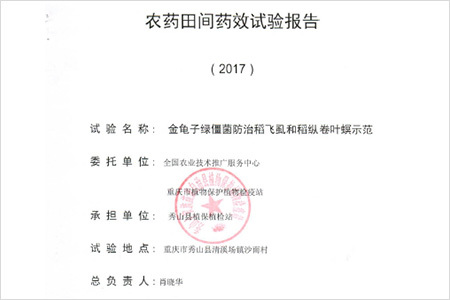
Xiushan, Chongqing
Implementation time: September 2017
Demonstration site: Shanan Village, Qingxichang Town, Xiushan County, Chongqing
Test area: 50 mu
Control objects: rice planthopper, rice leaf roller
Reagent scheme: Metarhizium anisopliae CQMa421 (dispersible oil suspension agent)
Demonstration objective: to verify the control effect and rice yield of 421 on rice planthopper and rice leaf roller, and provide scientific basis for large-scale promotion and application.
The results showed that the control efficiency against rice planthopper was 53%, the control efficiency against rice leaf roller was 88.1%, and the yield per mu of rice was 645.4kg. Compared with the conventional control area, the above effects had no significant difference.
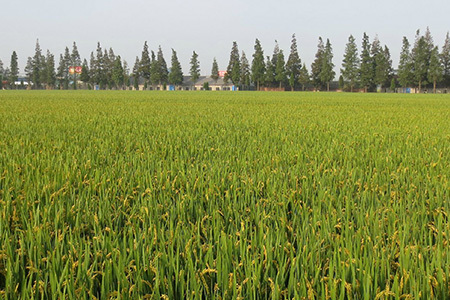
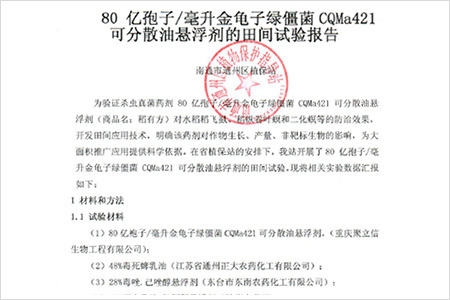
Nantong, Jiangsu
Implementation time: June to August 2017
Demonstration site: Shigang Town, Tongzhou District, Nantong City, Jiangsu Province
Test area: 30 mu
Control objects: rice planthopper, rice leaf roller, Chilo suppressalis
Reagent scheme: Metarhizium anisopliae CQMa421 (dispersible oil suspension agent)
Demonstration objectives: to verify the control effect of 421 product on a variety of rice pests, develop field application technology, and clarify the impact of the product on crop growth, yield, and non-target organisms.
The results showed that 421 could promote the growth of rice 4 days after application; It has a good control effect on rice planthopper, rice leaf roller and Chilo suppressalis, and the effect on pests increases with the increase of the number of pesticide application. However, the storage requirements are on the high side, and a certain interval is required with the use of fungicides.
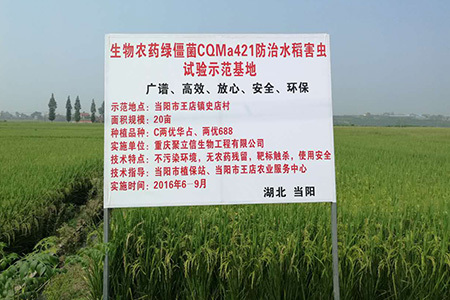
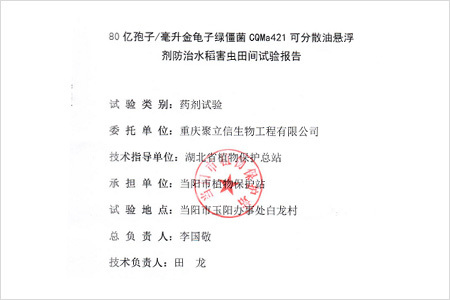
Dangyang, Hubei
Implementation time: October 2017
Demonstration site: Bailong Village, Yuyang Office, Dangyang City, Hubei Province
Test area: 30 mu
Control objects: rice planthopper, rice leaf roller, Chilo suppressalis
Reagent scheme: Metarhizium anisopliae CQMa421
Demonstration objectives: to verify the control effect of 421 dispersible oil suspension agent on a variety of rice pests, promote the use of biological pesticides, and guide large-scale control.
The results showed that the control efficiency of pests ranged from 60% to 70%, which had little impact on the yield of rice fields, and was conducive to the protection of natural enemies and the restoration of farmland ecosystems.



